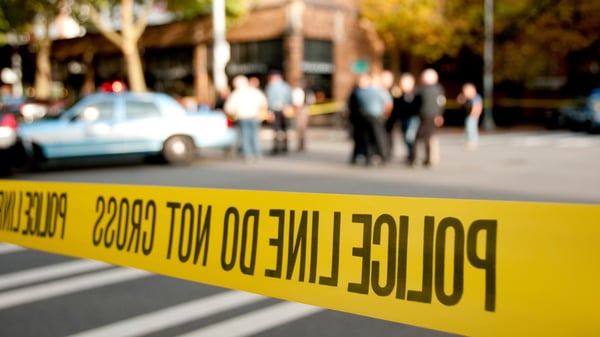
By deploying the right technology in the right places, law enforcement agencies can deter threats. While many police departments have implemented CCTV and access control solutions, audio is the technology seeing increased adoption for threat deterrence and prevention.
In a sense, audio is the "missing link" in most security solutions. Why? Because audio provides additional evidence and threat verification in locations that need it most. Think courthouses, interrogation rooms, and medical facilities.
Pairing audio with video creates a sort of tangible "ROI" for monitoring safety protocol in law enforcement agencies.
With this in mind, let's take a look at some locations ripe for audio deployment.
Courthouses and Courtrooms
Agitated inmates. Emotional families and witnesses. Futures on the line.
To say courthouses are full of emotional tension would be an understatement. And, when we consider the ramifications that result from the swing of the gavel, it's easy to see how high the stakes truly are for security personnel.
Let's start with a story: In Coffee County Courthouse in Tennessee in June 2017, an inmate was scheduled for a hearing. Nothing out of the ordinary, right?
The inmate, after struggling with one of the court deputies, was able to break free and stole the deputy's firearm before shooting two officers and fleeing.
In this case, video does a great job -- if feed is being monitored in real-time by personnel. If not, the video makes for great evidence in the future.
For proactive security solutions, this isn't the best approach.
Audio technology like aggression or gunshot detection would have automatically alerted the control center within seconds, dramatically shortening response time.
Another challenge courthouses face: Witness intimidation. When witnesses approach the stand, verbal threats are can be made that intimate witnesses. These incidents must be captured on audio. High quality microphones capture audio of all levels here while retaining speech intelligibility. This allows the courts to both prove or disprove witness tampering or witness intimidation.
Interrogation Rooms in Police Departments
Audio can sometimes be the missing piece to a story. To explain, let's dive into a story:
In a California detention center, a group of inmates were directed to attack another inmate. Initially, one of the inmates refused to take part it in. However, after being threatened by the mob and told he would be next, he reluctantly took part in the beating.
Video footage showed the inmate swinging but never actually made contact with the inmate being attacked. Since there was audio monitoring in place, his claims of reluctantly joining in were substantiated.
The recording also provided evidence for prospecting the leader of the group for initiating the vicious attack.
As we've covered before, interrogation rooms produce court evidence.
Although video is important to monitor behavior such as facial recognition or body language, audio helps tell the whole story/
Let's explain. Do we really expect a suspect to loudly proclaim their guilt at audible levels? No.
Another example: Detectives are interrogating a suspect. The suspect mutters what would be a key finding under their breath in passing. Do detectives catch this information? Possibly. Do you want to risk detectives not catching this information? No.
Low-quality recording devices may not pick up on this level of audio. Professional, security-level recording devices allow you to capture all of the audio, effectively telling the whole story from the interview room.
Detention Centers
Audio can sometimes be the missing piece to a story. To explain, let's dive into a story:
In a California detention center, a group of inmates were directed to attack another inmate. Initially, one of the inmates refused to take part it in. However, after being threatened by the mob and told he would be next, he reluctantly took part in the beating.
Video footage showed the inmate swinging but never actually made contact with the inmate being attacked. Since there was audio monitoring in place, his claims of reluctantly joining in were substantiated.
The recording also provided evidence for prospecting the leader of the group for initiating the vicious attack.
Medical Facilities
Audio is an excellent addition to medical facilities and infirmaries. Since mistreatment cases are relatively common, audio monitoring systems allow security personnel to validate or dispute claims of abuse.
When we consider inmates with mental illnesses, it's easy to see why: From 2011-2012, the Bureau of Justice Statistics reported that about 31 percent of jail inmates had a cognitive disability. Interactions with these inmates can quickly escalate into high-risk situations.
This is why medical facilities, like courthouses, are preferred locations for audio technology like aggression detection. Any fear, anger, or hostility in a person's voice is recognized and alerts authorities. This allows your staff to intervene before a situation escalates into a high-risk situation.
Bringing It Together
Threat deterrence and prevention is an increasingly difficult task. CCTV was a godsend in expanding situational awareness for security staff. Now with audio, authorities can further expand this awareness and shift incident response from reactive to proactive. Furthermore, increased technology adoption in the law enforcement sector creates a tangible "ROI" for monitoring security which can be measured alongside video.
What do you think? Are you a law enforcement professional who uses audio in your facility? Let us know your experiences below.


